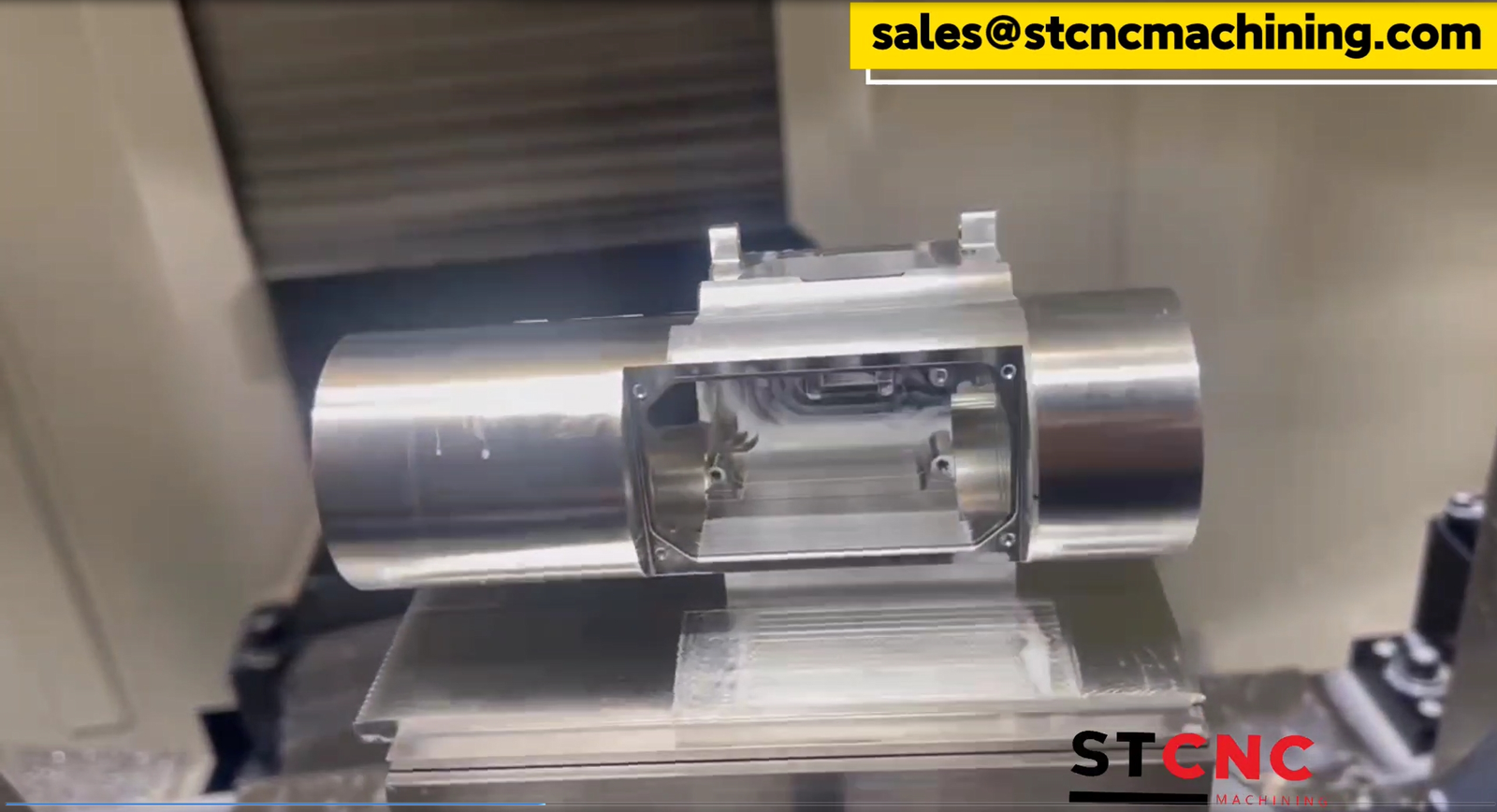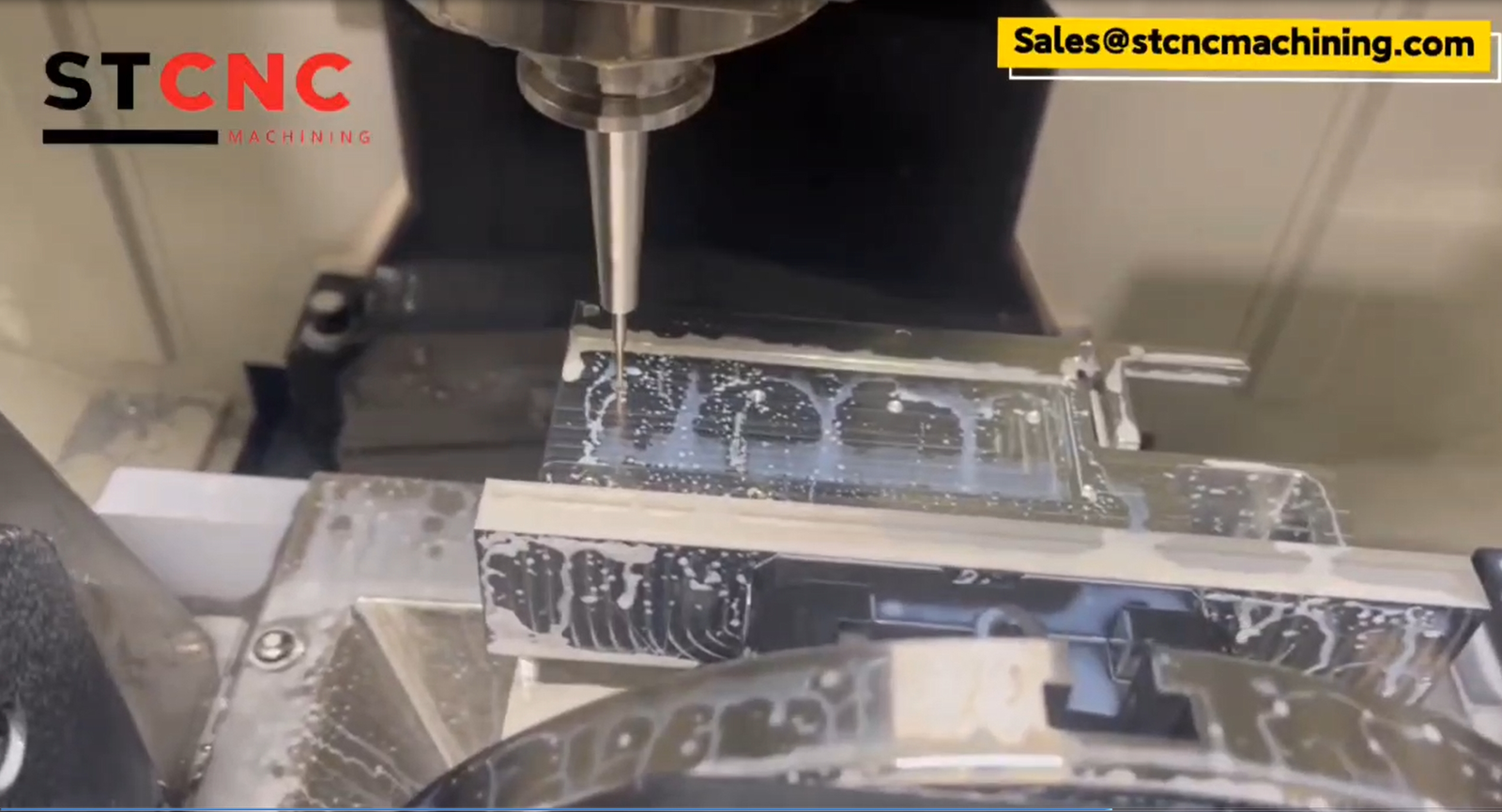Many companies manufacturing complex parts consider purchasing five-axis machining centers to enhance production efficiency. A 5-axis CNC machining center is a highly sophisticated machine control CNC machine tool that enables the processing of multi-directional and multi-angle complex parts. It finds extensive applications in aerospace, automobile manufacturing, mold manufacturing, and other fields. While selecting a five-axis machining center, it is essential to consider several key elements to ensure that the equipment meets the process requirements and improves processing efficiency.
Are you interested in knowing how to choose the right five-axis machining center? The following pointers can help you find the right answer.

Processing Range
When considering a five-axis machining center, the size and shape of the parts you typically machine are the first things to consider. Determining the workpiece’s maximum size and specific shape is essential to ensure that the machining center and range of the automated horizontal 5-axis CNC machines can meet these requirements.
To ensure that the entire machine part cnc machine still has enough space to operate in a straight direction, it’s important to consider its travel along the X, Y, and Z axis separately. Also, make sure that the stroke is big enough to fit the size of the part of the CNC machine that needs to be machined.
Understand the A and B rotation range and the machine’s linear and rotary axes. These two linear axis and two rotary axes of rotation determine the tool’s Angle of rotation concerning the workpiece’s desired shape. For machining complex surfaces and multi-angle machining, it is necessary to have a five-axis machine to ensure that the rotation range is large enough.
Finally, when selecting a five-axis machining center, choosing one that meets your application needs is important. This will make your production more flexible. Ensure that the five-axis positional machining center you choose can adapt to the type and shape of the parts you typically work with.

Accuracy and Repeated Positioning Accuracy
First of all, clarify the machining accuracy requirements of your parts. This may involve requirements primarily machining aluminum regarding surface finish, dimensional tolerances, shape tolerances, etc. Different applications may have different requirements for vertical machining accuracy.
It is important to clearly understand the static accuracy of a five-axis machining center, which refers to its positioning accuracy in a stationary state along linear axes. This number reflects the accuracy of the tool center point of the 5-axis CNC machine even when it moves along different axes, and it plays a crucial role in ensuring that the five-axis machine tool is accurately positioned during the production process.
In addition to understanding the accuracy performance surface or machine of 5-axis CNC machines in the static state, understand the accuracy performance surface or machine axis of 5-axis CNC machines the machine tool in dynamic motion. Dynamic accuracy relates to the stability and accuracy of the machine tool at high speed, which is critical for fast cutting and more complex shapes in trajectory machining.
The accuracy of high-performance five-axis machining centers can be affected by changes in temperature. However, these machines are equipped with temperature compensation systems that maintain machine accuracy and automatically adjust to maintain accuracy under varying temperatures.
Spindle Power and Speed

When CNC machining processes different materials with varying degrees of hardness, it’s important to ensure that the cutting capabilities match the requirements for each specific material. Harder materials require more powerful spindles to guarantee sufficient cutting force. Therefore, the spindle power and speed of the rotation axis of the five-axis machining center should be chosen according to the processing material.
Determining the required machine spindle and power for machining specific parts is important. Higher spindle power generally means a machine can handle various materials and other processing power requirements better and more conducive to speeding up the CNC machining process.
It is important to know the speed range of the spindle heat control, as processing different raw materials requires different cutting machine tools, which in turn require different speeds. A spindle head heat control with a wide range of speeds can provide greater flexibility to adapt to different processing scenarios.
For optimal cutting efficiency, it’s important to match the spindle power and speed with the size of the cutting tool. If you’re using larger cutting tools, a more powerful spindle is needed, with slower rotary speeds, while smaller cutting tools work better with higher speeds. By choosing the appropriate spindle power and speed for your cutting tool, you can achieve the desired results from the cutting process efficiently and effectively.
Axis or Rotary Table Stability

To ensure a safe and efficient workflow, it’s crucial to have a good grasp of workstation structural design, support systems, and connections. Opting for a sturdy and spacious table structure can provide greater stability and is ideal for machining large, heavy parts.
The table of a five-axis machining center plays a vital role in the machining of aerospace components, ensuring their stability and rigidity and minimizing vibration and deformation during operation. Due to their excellent stability, Cast iron, stainless or alloy steel, and high-strength metal alloys are commonly used materials for the machining center table. These materials provide better resistance against vibration and deformation, improving precision and accuracy during machining.
It’s worth noting that the table is designed with protective measures, including shields and cooling systems, to prevent cutting fluid and chips from entering the structure. This helps to reduce friction and wear on the table, allowing it to function smoothly and efficiently.
When selecting a workbench for machining tasks, it’s essential to check if it comes equipped with a vibration suppression system. This system is designed to minimize the impact of any vibrations on both the workpiece and the tool. Doing so can significantly improve the stability and accuracy of the machining process, leading to better results. Hence, it’s a crucial factor to keep in mind while choosing a workbench for machined parts.
Maintenance and Service

When choosing a manufacturer, evaluating their after-sales service team is crucial. Look for a team with the technical expertise to solve problems quickly and efficiently. In addition, ensure that the team is well-trained and knowledgeable to support your organization. A strong after-sales service team can help reduce the impact of equipment failures on production, ensuring that your business stays up and running smoothly.
When speaking with the vendor about equipment, ask about their maintenance schedule and cycle. Regular maintenance is crucial for preventing failures and ensuring the equipment operates smoothly in the long run. It’s important to have a clear understanding of the maintenance plan to avoid any unexpected issues down the line.
It’s crucial to inquire about the manufacturer’s emergency repair response times. In case any equipment fails, it’s imperative to have access to swift, professional maintenance support. Knowing the manufacturer’s commitment to emergency repair response times can help you make an informed decision and ensure your business runs smoothly.
Making sure that the manufacturer can provide the necessary spare parts within the required timeframe is very important. Having quick and easy access to suitable spare parts can significantly help minimize equipment downtime, increasing productivity.
Conclusion
Developing five-axis machining centers has transformed the manufacturing industry by providing advanced capabilities and potential. Nevertheless, manufacturers face challenges when choosing the right five-axis CNC machine tool. This article aims to help manufacturers navigate the process of selecting the appropriate five-axis machine tool, enabling them to enhance their production efficiency. I hope that through reading this article, the manufacturers find their five-axis machine tools and improve their production efficiency.
